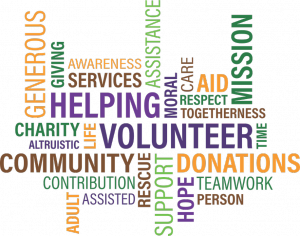There are many reasons why people go in to the non-profit industry. Some people want to fight poverty, some work closely with a church and others might be dedicated to fighting a disease. One common theme among people who work in the non profit industry is that they want to be a part of something greater than themselves. One thing many people in this industry do not anticipate is having to manage risk, but this can be one aspect of their job that can ultimately determine the success or failure of the organization.

Many people who go in to this sector do not anticipate having to manage risk or buy insurance. They probably do not anticipate their jobs causing them to have to worry about things like a return-to-work program, workers’ compensation benefits or general liability insurance. As a non-profit professional, how effectively you handle these aspects of your organization will contribute immensely to the success or failure of your organization. For that reason we have created three main tips for managing risk within your non-profit agency.
Have an effective safety program in place.
Having an effective non-profit safety program in place is essential for all non-profit organizations. Most non-profits depend on people volunteering their precious time and money to the organization. The last thing you want to happen is for a volunteer to be injured while helping your organization. A safety program can prevent this from happening.
First and foremost, reporting and documenting injuries needs to be a part of your company culture. It should start with the first training all employees get during the on-boarding process. Employees need to be well aware of how to inform volunteers how to properly do their job in a safe manner. This can go hand in hand with your business’s safety program and your business’s safe driving program. Another thing to keep in mind is that how safe your organization takes safety starts with you and your key employees. If you stress safety as the professional, your employees and volunteers will also value this safety program.

When should a new or small non-profit decide to purchase insurance?
For a new non profit, insurance may not be necessary at first, but it is not something to be taken lightly. No matter what the financial situation is of an organization, the quickest way to fail as a non-profit is to not secure adequate insurance. Your state laws will determine when you must purchase coverage. Workers’ comp and general liability are typically the first two policies you will find a need for. Workers comp protects your employees and general liability protects your organization from damages to third parties. Even if you are fairly sure you have proper coverage or do not need coverage at this time, consulting with an insurance professional with whom you trust is a very wise decision. If you know someone who works in risk management or insurance, it might be a good idea to ask them to sit on your board of directors.
Have a return-to-work program in place for injured employees.
Operating an effective return-to-work program is another aspect that will contribute immensely to the success or failure of your organization. Ideally you will never have a need for a return to work program because none of your employees will ever be injured on the job. But as you very well know, we do not live in an ideal world. For that reason it is crucial for you to prepare for the day when you do have an inured employee. If you are prepared, you will be able to get those employees back on the job quickly and control the cost to your organization. Any work you have to get the injured employee involved in the organization will benefit the injured employee and your organization in the long run. Getting people back on the job quickly is important because the quicker they are back on the job the more likely they are to not become an injured worker long-term or permanently.
